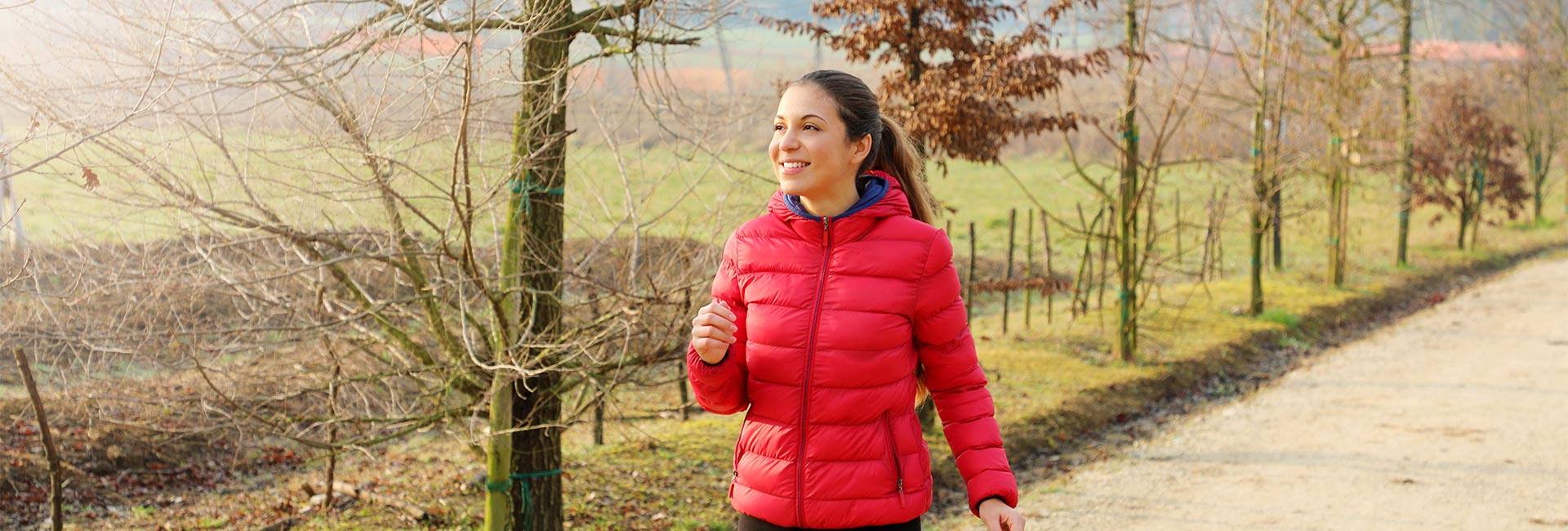Breathing is a fundamental root of life. “Breathing is the most basic movement we make. All other movement builds on breathing, owing to the fact that it is the foundation for any other complex movement pattern.”4
However just because you are breathing doesn’t mean you are using your most efficient and effective mode of breath. Paying attention to your breath can help you regulate your physiology in everyday activities, exercise, and relaxation.
If nothing else, just NOTICE your breath and allow this awareness to guide your workout.
“Paying attention to your breathing during exercise can have a big effect on your athletic performance. When you practice proper breathing, you’re getting oxygen to your muscles in the most efficient way, which means you can push yourself harder in class (on a run/during a workout) and ultimately get better results.”2
Breathing Basics
Nasal
We breathe in oxygen (O2) and exhale carbon dioxide (CO2). When we breathe through our nose, we also produce nitric oxide which helps the efficient delivery of oxygen to our muscles, organs and brain. Nasal breathing also moisturizes and purifies the air we breathe. There is more resistance with nasal breathing (this is why people like to breathe through their mouth during exercise) and this can help slow down your breath rate.
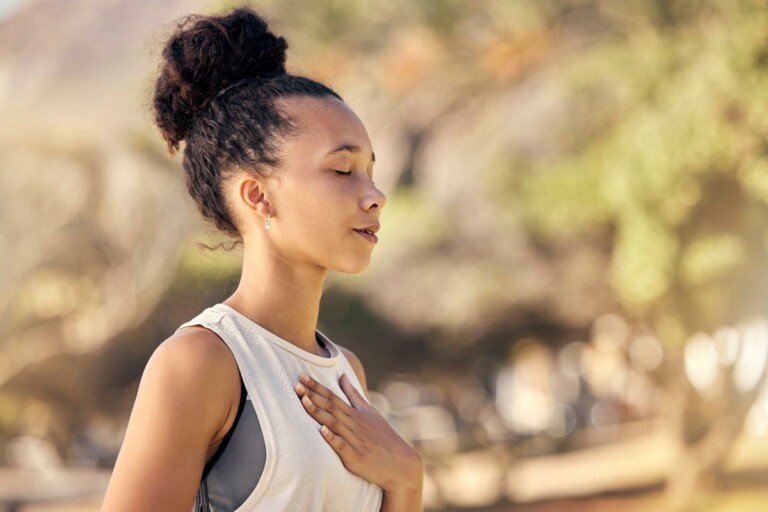
Low
Our diaphragm is our most efficient muscle of respiration. It expands on the inhale and retracts on the exhale and does so in a 360-degree arc. Think of blowing up a balloon – it doesn’t expand in just one direction; it expands equally in all directions. Place your hands on your side ribs – as you inhale your ribs (via the diaphragm) expand out and as you exhale, they drop back in. This is a good technique to use while exercising to ensure you are engaging your diaphragm, especially in between sets or during recovery laps. If you are breathing shallowly and in your chest you will not get the same level of O2 delivery to your muscles and this will affect performance.
Exhale
The CO2 we breathe out during an exhale is reflective of the CO2 level in our bloodstream. The ideal is for the level to be between 35-45mmHG – you won’t know your level without a capnography reading or a blood test, but what is important to know is the power of the exhale, for if our CO2 is too low, it affects the efficiency of the delivery of O2 to our muscles during exercise. Thus, the more we connect to the exhale during exercise, the more efficient the oxygen delivery and the more powerful our performance.

BUILD – strength training
In general, it is best to inhale during the eccentric or lengthening aspect of an exercise and exhale during the concentric or shortening phase.
For example, if performing bicep curls, one would exhale on the lift up or bending of the elbow, and inhale as the arms extend.
Notice the flow from one movement to the next.
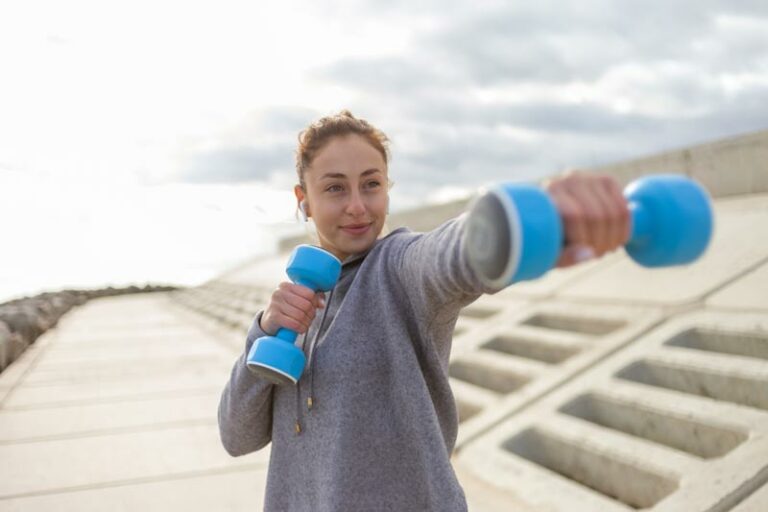
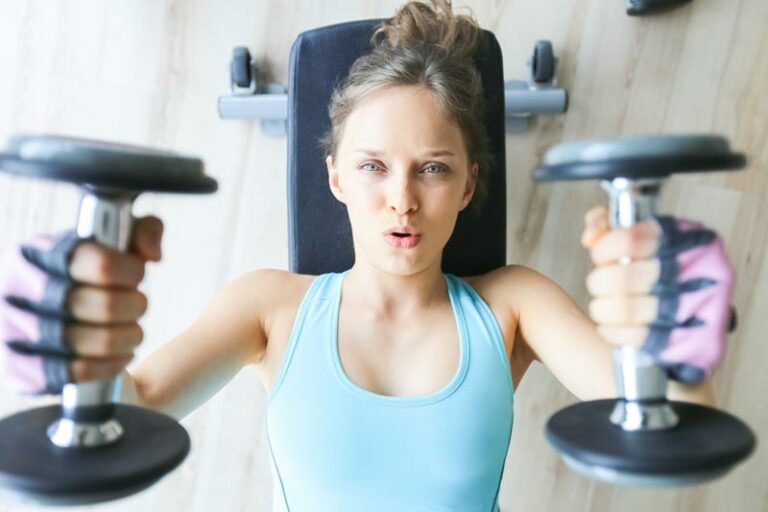
The concentric phase is generally harder and with the exhale and the retraction of the diaphragm, there is an inherent contraction of the core muscles to add stability in this phase.
Additionally, the exhale helps avoid a sudden drop in blood pressure or lightheadedness that can occur with holding your breath. Unless you are powerlifting, it is best to not hold your breath.
BURN – aerobic activities
Establish a steady rhythm of inhale and exhale through your nose.
“With aerobic exercise, studies show that you can improve your efficiency by as much as 25 percent just by nasal breathing, inhaling and exhaling through your nose,” says Dr. Corbin Hedt, PT. 1
Another powerful tool to get more oxygen and reduce the impact of running on your body is rhythmic breathing or creating a rhythm between breathing and the way in which you run.3 You may consider a cadence of equal strides or revolutions on the inhale as on the exhale. For example, 2-3 strides inhale and 2-3 strides exhale.
“Rhythmic breathing can also serve as an inner speedometer, allowing runners (or cyclists or elliptical users) to measure their pace and adjust if it’s either too easy or too hard.”4
Stay nasal as long as possible to maximize your nitric oxide production. Once you have gotten comfortable with both nasal and diaphragmatic breathing you should be able to perform 90% of your workout with nasal breathing. That last 10 percent with less resistance of mouth breathing is truly for an all-out sprint or high-intensity portion of interval training.
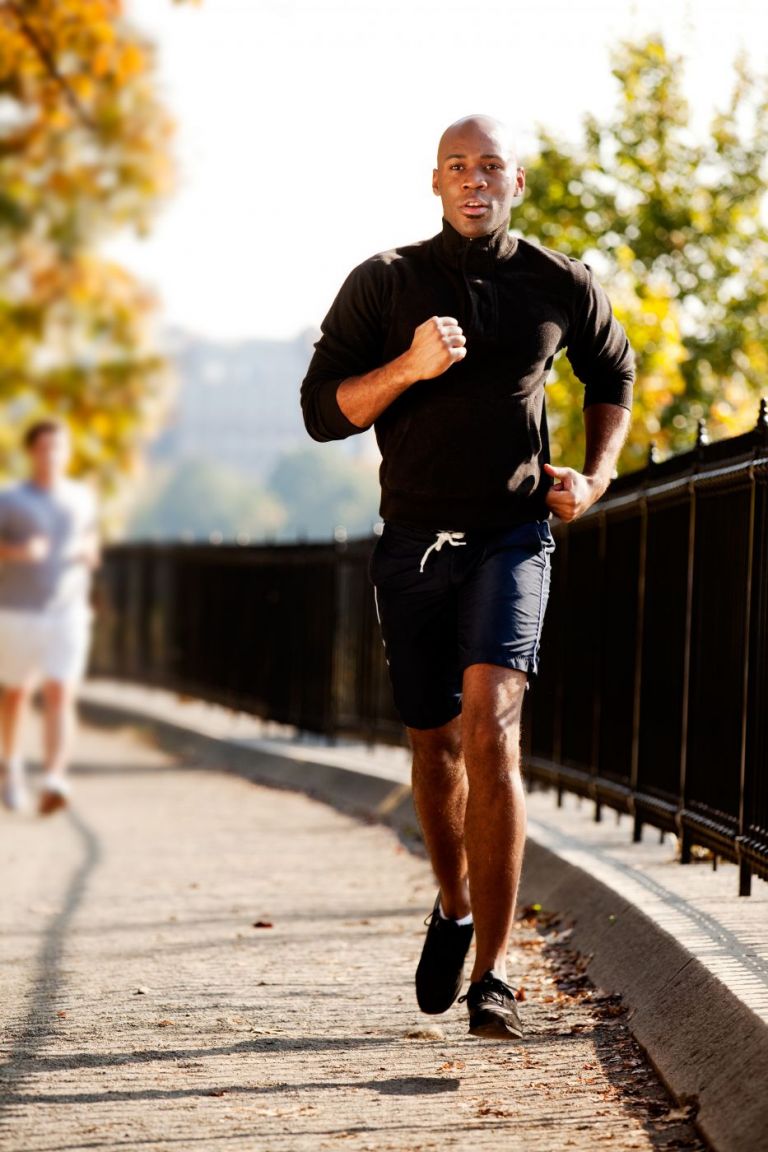
BALANCE – yoga/stretching
Whether you are performing balancing activities, taking a yoga class or just stretching after a workout, each movement must be “breathable.” This means avoiding holding, tightening, or shortening your breath cycle. Ideally, a person can breathe deeply into the pose or stretch on a slow and mindful basis to maximize the lengthening and opening. This optimally will be a slower cadence than that used with aerobic activities.
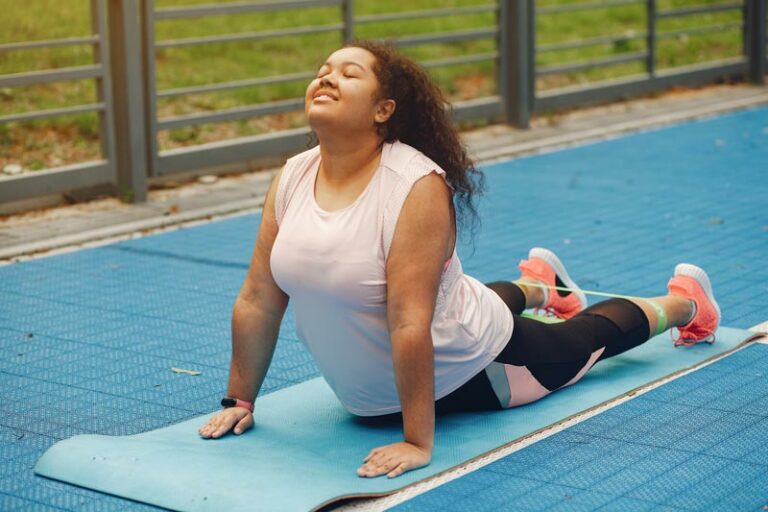

With balance activities, the focus is on lengthening the spine as the feet (or hands/arms) are grounding to the surface and creating spaciousness throughout. This alignment not only enhances stability but also encourages a sense of lightness and freedom within each movement. By maintaining a steady and intentional breath, you can deepen your connection to the present moment, allowing for a more profound exploration of balance and flexibility.
BE
Regardless of your workout type, take a few moments at the end of a session to breathe and feel what the moment has for you. Again, NOTICE. This is a sweet opportunity to be present with your results – the glow, the high, the fatigue, the relief, the joy of knowing you are done. Let your nasal inhale travel low to your diaphragm and your nasal exhale bring relaxation.
“The more I bring awareness to my breath, the more I practice observing myself in other ways. That’s powerful, because we can only bring about change when we’re aware of the status quo.” (Nico Sarani, Pelaton instructor)2
References:
- https://www.houstonmethodist.org/blog/articles/2023/may/why-proper-breathing-during-exercise-is-important-how-to-avoid-common-mistakes/
- https://www.onepeloton.com/blog/how-to-breathe-when-working-out/
- https://www.lung.org/blog/breathing-basics-for-runners
- Vranich, Belisa and Sabin, Brian. Breathing for Warriors. St. Martin’s Essentials, 2020.
Our PTs are here to help!
Physical therapists treat a wide range of conditions, much more than musculoskeletal injuries. Our BreathWorks program could help by addressing breathing behavior, mechanics, and chemistry. Physical therapists can help you to identify areas that are negatively affecting your breathing and create a customized plan to guide you through your recovery.

